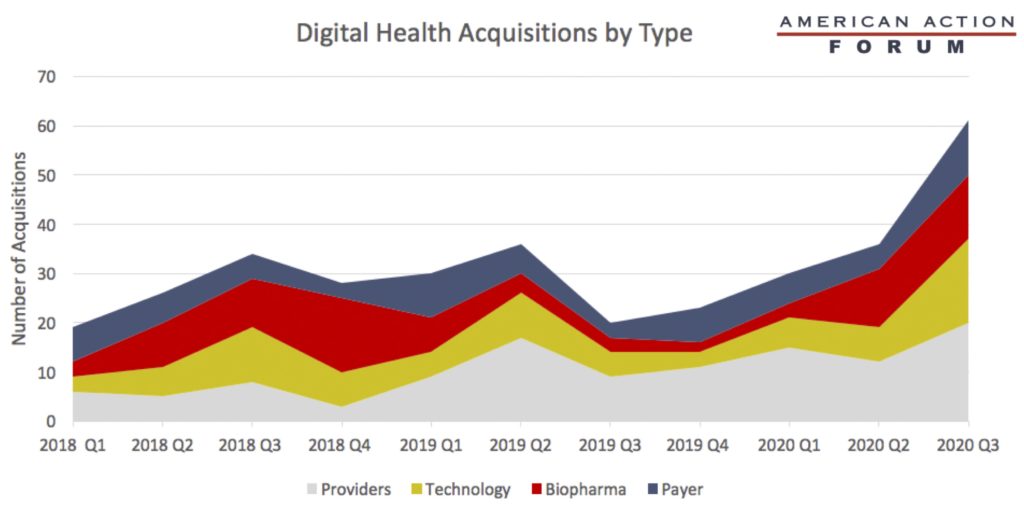Weekly Checkup
October 9, 2020
Who is Responsible for Trump’s Pharmacy Discount Cards?
I’m often frustrated by politicians’ inability to honestly address long-term budget challenges. I also believe that, over time, Congress has ceded too much policymaking authority to the executive branch. The two problems are related: Congress isn’t bad at recognizing problems, but the institution suffers from a collective action problem. Individual members don’t want to be responsible for necessary but unpopular policy decisions, so Congress punts sorting out the controversial details to the executive branch. This week, Politico has a report detailing how the Trump Administration managed to irritate me on both points, when President Trump announced, pretty much out of the blue, new pharmacy discount cards for seniors.
Back in September, President Trump rolled out a number of executive orders that were framed as “the America First Healthcare Plan.” Frankly, there wasn’t a lot to the executive orders—one of them asked Congress to do something about surprise medical bills and asserted the administration’s intent to do something about them next year if Congress doesn’t—but the White House did put together a nice brochure touting the plan. One proposal that was attention-grabbing, however, was the announcement that “Medicare beneficiaries will soon receive a card in the mail containing $200 that they can use to help pay for prescription drugs.” The Medicare trust fund is going bankrupt, but the administration has decided to treat it like a goodie bag for currying favor. More concerning, however, is that it’s probably within its congressionally provided authority to do so.
As detailed by Politico, the proposal to send senior citizens a $200 pharmacy gift card is still a work in progress, but the plan is to pay the $7.9 billion cost directly out of the trust fund. The Medicare Trustees reported in March that the trust fund will be bankrupt in 2026. In the grand scheme of things $7.9 billion won’t affect that reality, but the audacity of redirecting those funds to an election-year gimmick should be offensive to anyone who ever expects to depend on Medicare.
The bigger issue, to my mind, is how any administration could do this in the first place. It should shock the conscience that a president could unilaterally redirect roughly $8 billion in Medicare premium dollars to a half-baked attempt to appeal to senior citizens ahead of an election. If you think that’s an overstatement, notice that the administration is going to spend $19 million to send letters to Medicare beneficiaries prior to the election letting them know the cards are in the mail, even if they don’t arrive before the election. The administration can do this, however, because Congress has, over the years, granted wide discretion to the executive branch to run “demonstration projects” aimed at determining new and more efficient ways of caring for seniors.
For example, the Affordable Care Act (ACA) established the Center for Medicare and Medicaid Innovation (CMMI), which vastly expanded the executive’s authority to go around Congress and make wholesale changes to federal health care programs that would have required congressional action prior to the ACA. CMMI is supposed to test “innovative payment and service delivery models to reduce program expenditures…while preserving or enhancing the quality of care.” Objectively there is value in this goal, and I can’t argue against all demonstration authority. But CMMI operates without any real checks. In theory, Congress can block CMMI initiatives, but that requires both chambers of Congress to pass legislation. Now, to be clear, the discount cards aren’t being distributed under CMMI authority, but under different demonstration authority that predates the ACA. The point remains, however, that Congress has progressively ceded ever more policymaking authority to the executive branch. Ultimately it is Congress that is responsible for the executive’s abuse of that authority.
Regardless of which party controls Congress, regardless of who is in the White House, it’s time for Congress to reclaim a modicum of its policymaking authority and begin to put some guardrails around executive branch action via demonstration fiat.
Chart Review: Investment in Digital Health
Julia Demeester, Health Care Policy Intern
One well-observed trend during the pandemic has been the shift toward telemedicine, and with this shift in practice has come a flurry of investment. This year is already the largest funding year ever for digital health: Through the third quarter of the year, funding has already reached $9.4 billion, well over the previous high of $8.2 billion in 2018. In terms of transactions, institutional venture firms and corporate venture capital firms account for the largest share. Corporate venture firms include providers, technology companies, biopharma companies, and payers. As the graph below depicts, over the years, providers have made the highest number of acquisitions—perhaps not surprising, given their desire to reach patients. Technology companies fluctuate their involvement but remain one of the higher investors. The number of acquisitions made by payers has remained relatively lower, which is also likely not surprising, as telehealth can increase utilization. Data from Rock Health shows that technology companies and biopharma companies have substantially increased their digital health investment activities within the last 12 months. It is anticipated that the final quarter of 2020 will see continued investment in digital health.
Data from Rock Health
Worth a Look
Las Vegas Sun: Why Nevada halted the use of rapid coronavirus tests in nursing homes
Axios: Europe’s coronavirus case counts just keep climbing











